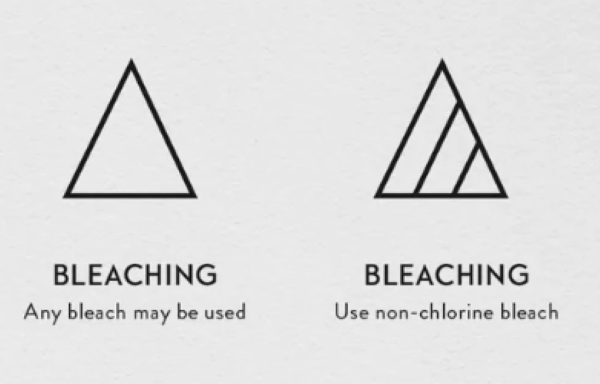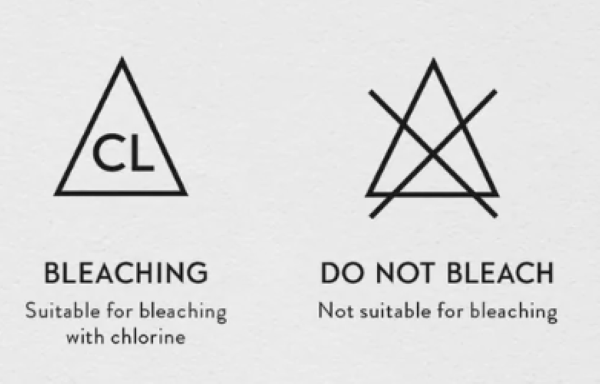Up to five symbols that indicate how to care for the fabric should be included on every clothing label, together with information about the fabric’s composition. Here is our comprehensive explanation of what each symbol means
1. Washing labels
The number of dots in the sign for a tub of water in the clothes washing symbols below can help you estimate the temperature, whereas a tub with one or two lines drawn under it represents a different cycle type.
Washing cycle and machine symbols

Washing temperature symbols

Except for the “Do not wring” mark, it is typically pictured as a bucket filled with water. The proposed maximum temperature will be shown by dots or numbers inside the bucket symbol if the item can be washed in a machine. For example, one dot indicates a temperature of 30 °C, two dots indicates a temperature of 40 °C, and four dots indicates a temperature of 60 °C.
If a line is drawn beneath the bucket, it means the garment needs to be washed using the synthetic cycle. If there are two lines, it is recommended to use the wool or gentle cycle.Wash the item by hand at 40 °C or less if you see the hand wash sign on the fabric care label, , or use your washing machine’s hand wash program.
2. Bleaching symbols
Check the fabric care label on your garment to see if it can withstand bleaching chemicals before you go for your bottle of bleach to restore the brilliance of your whites.


When necessary, you can safely use bleach on your item of clothing if you notice an empty triangle. The use of non-chlorine bleach is indicated by the diagonal lines inside the triangle; however, if the triangle is crossed by two lines, no bleach should be used.
3. Drying Symbols
General drying symbols

Drying temperature symbols
The presence of a square with a circle inside signifies that the item can be tumble dried safely, and the number of dots inside the tumble dry symbol designates the appropriate temperature setting—one dot denotes low heat, two dots, medium heat, and three dots, high heat.

If there is no dot, you can tumble dry your items at any temperature. Use the “Permanent Press” setting if there is a bar beneath the dryer symbol; if there are two bars, use the “Delicate” setting.
If the sign is crossed, do not tumble dry your clothing; instead, air dry it. Drip drying is represented by a square with three vertical lines inside, and flat drying is represented by a square with one horizontal line in the center.
4. Ironing Symbols
After ironing, some fabrics look fantastic, while more delicate fabrics may be harmed. Even some textiles require extra caution when being ironed.

If there are no dots on the iron, any temperature can be used to iron your item of clothing. The one-dot ironing symbol is typically used on delicate fabrics like wool and silk, the two-dot symbol on synthetics, and the three-dot mark on clothes made of linen and cotton.
A cross over the sign indicates that the item is unsuitable for ironing, while the image of two lines emerging from the iron’s bottom with a cross over it indicates that steaming is not permitted.
5. Dry cleaning symbols

For objects that are best handled by a professional, dry cleaning is an alternative. The symbols listed below are intended to help you decide whether or not to have your clothing dry cleaned and to instruct the dry cleaner on the solvent to use.
Our comprehensive laundry symbol guide should assist you in taking better care of your clothing. Despite the fact that these guidelines are more for your dry cleaner, we did promise you the most comprehensive guide to laundry symbols!






